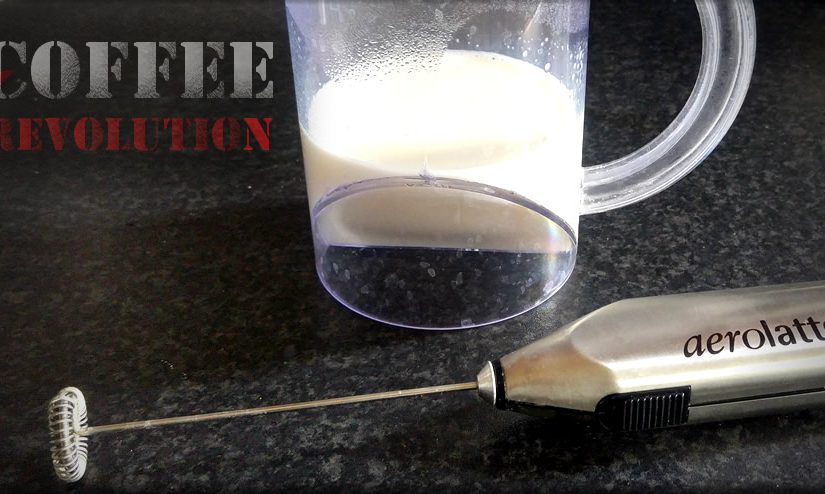How To Froth Milk For Coffee Like Cappuccino And Flat White
Frothing milk is key to making many coffee drinks such as cappuccino, espresso, mocha, Americano, Latte, Macchiato, Flat White and others.
If you’re young, enthusiastic about coffee and do not have the equipment for making these more complex and sophisticated kinds of coffees and frothing milk for them, then you need a simpler, do-it-yourself guide.
That’s what this guide is for. It is also useful if you just want more insight into what you are getting when you order your coffee at your favourite coffee shop.
You can learn to froth milk and make microfoam using everything from a hand whisk, microwave, to using a steam wand on a coffee machine. These have different results depending on the kinds of milk and cream used and the temperatures.
It is important to understand the different elements necessary to make these different kinds of coffee. Most coffee drinks are made when the ground coffee beans are brewed with hot water, either with the hot water poured over them, slowly using a drip or filter or quickly under pressure using an espresso machine. It can also be done with equipment such as a coffee press otherwise known as a coffee plunger, press pot or French press.
The slower brewed and plain coffees are commonly known as just coffees while other coffee drinks are named based on their coffee, chocolate or milk content. All coffee drinks are primarily based on varying shots of espresso. The major difference is the different strengths involved, and the milk or cream included. Coffee drinks may also include flavourings, sweeteners, and alcohol.
Espresso is thicker than coffee but brewed differently by forcing out a small amount of hot water to go through the coffee beans making it more concentrated.
Uncommonly, there are coffee drinks made with cold water.
The milk variants also form an important element in these different coffee drinks. A major difference in coffee drinks is how much milk, what kind of milk and the process involved.
Milk comes in different variations including skimmed, whole milk, or semi-skimmed milk with the flavor of the milk varies depending on the fat, protein and sugar contents which determine how it reacts to the heat and pressure of the process.
While you may be unable to use the different kinds of milk, techniques, and equipment that your favourite coffee shop can, you can use similar do-it-yourself techniques to get the different textures and consistencies you require for various coffee drinks.
The ideal temperature for milk frothing is between 65C and 70C, outside this range the milk does not hold the bubbles or acquires a burnt sweet toffee taste.
Steamed milk
This kind of milk is the most common and basic kind used in a lot of coffee drinks. In this process, the milk does not change too much while it is being steamed as the goal here is simply to heat up the milk. You can do this simply with a microwave, by boiling or hot water. You should start with cold milk and only small steam amounts you need as you should not steam milk twice. The process is supposed to help improve the texture and flavor through the heating and stirring of the milk.
Foamed Milk
Foamed or frothed milk is milk that is heated, shaken and mixed to include air and improve its texture often separating the milk and its foam. There are also variants of foamed milk as well. They are:
Microfoam
This is considered wet foam which is made when milk or cream is brought to foam using a steam wand on an espresso machine. This is primarily used for drinks that are based on espressos. This kind of foam has tiny air bubbles. They can also be used to create latte art in coffee drinks.
Macrofoam
This is similar to microfoam in the process and types of milk used except that the foam and bubbles are larger and more obvious. Where microfoam is regarded as wet foam, this is regarded as dry.
Crema
This is the light coloured creamy foam that forms on top of espresso when it is freshly pressed and first pulled from an espresso machine.
There are some ways to make foamed milk including:
Using a steam wand on a coffee machine
- To do this, first, fill your pitcher with cold milk. You can also store your steaming pitcher in your refrigerator, so it is cold as well. The quantity here depends on how much coffee you need. Remember that it is not wise to steam milk and as such, do this in small quantities of the desired amounts.
- Run your steam wand for a bit to ensure that whatever is left in it escapes and the wand is heated up.
- Next, like you would a mixer or food processor, put the pitcher under the wand and turn it on watching and listening as the milk spins and in the process, popping sounds come off. Be sure not to overfill your pitcher and watch for the changes in the volume, color and sound of the milk till it gets to the desired texture.
- Start out with the steam wand at the same level as the surface of the milk and as you whisk, plunge it in deeper, all the way into the pitcher
- Turn off at your desired texture and tap the pitcher to remove air bubbles and settle your milk before using it in your coffee drink or for your latte art.
Using a hand whisk or frothing wand
- This is relatively harder as it is more manual work and your hand does the labor otherwise done by your steam wand. It will, however, get you a lot of large bubbles and foam. It is also not the best option if you need your foamed milk for specific recipes or for making latte art unless you have a very good quality frothing wand.
- To do this, warm your milk first, in a pan or with a microwave and then begin whisking vigorously with a hand whisk or the whisk from your food processor or baking mixer. The best results come out of a back and forth motion rather than a circular one which is easier on your hands and arms. Either way, this method will get you some foam for your coffee.
- If you prefer to use a frothing wand, you can follow this method, simply switching your hand whisk for a frothing wand. This takes a bit more time but should give you your desired foam.
Using a microwave
- When using a microwave to make foamy or frothed milk, you have to do some of the work yourself while letting your microwave do the rest. When making foamed or frothed milk with a microwave, the ideal type of milk is low or nonfat alternatives which are the easiest to foam. Whole milk or milk with more fat and creams only come out of the microwave with a thin line of foam and tiny air bubbles and not the desired result.
- To use a microwave, simply put your milk in a milk jar made from microwavable material or in a bowl with a lid, shake the milk properly before throwing it in the microwave to allow for air into the milk and to start creating some foam. This way, when you microwave it, the foam builds up, the milk heats and you have a thicker and stronger foam layer.
- Technically, you can leave it at just the foam but without the microwave and heating process, the foam will not last but rather collapse, and of course, your milk is left cold which most people do not like. When you use the microwave, however, you get your milk super thick and super frothy.
Hot water and stir
- Although this is no professional steaming technique, it is the simplest, do it yourself method of getting frothy milk for your coffee drink. It might not result in the best coffee like your coffee house does it, but it is a good option if you find yourself craving this without the money or equipment.
- Simply make a concentrate of milk, put it in a bottle or jar with a lid that can handle the pressure of hot water and shake for a while to build up the foam, afterwards, add boiling water making sure to do this from a distance to allow for air to enter which helps build up the foam as well. Shake or stir this mix, and you have yourself a good but simply made jar of frothed milk.
- The good thing about this method is that it works well with most kinds of milk including full cream, whole milk, and milk with more fat. It also works with powdered milk although you first have to make it into a liquid form with warm or lukewarm water.
You can also throw in heated milk into an electric mixer or your blender and mix till you get the desired texture.
Oh, and it isn’t wholly useless to just throw your milk in a jar, close tightly and shake vigorously. While this might not be a sophisticated or professional option, you will still get some froth and foam although it will not make latte art or more complicated recipes. This is a method I have had to resort to and I used an empty bottle of milk to shake the warm milk into a froth and created a cappuccino.

